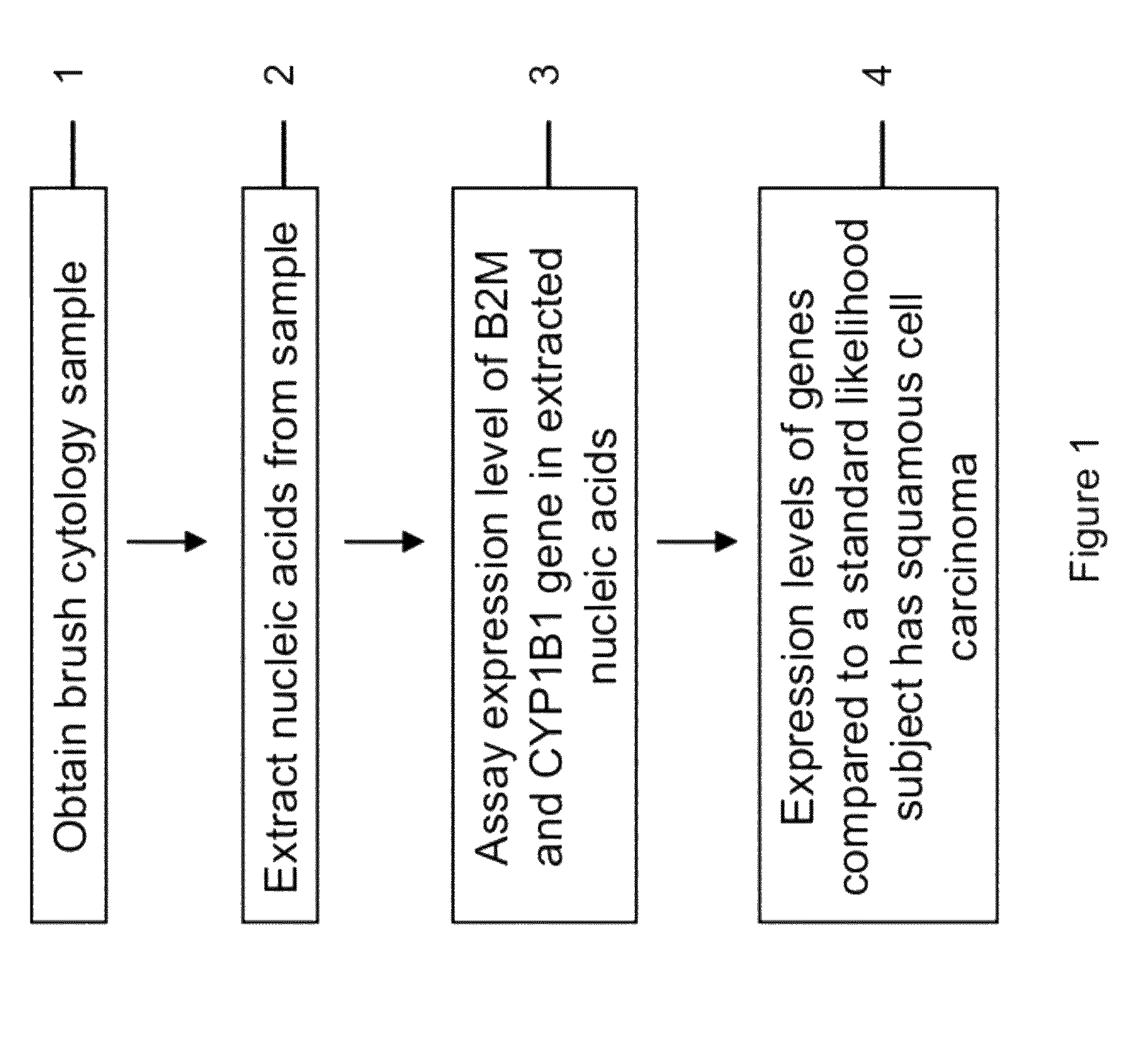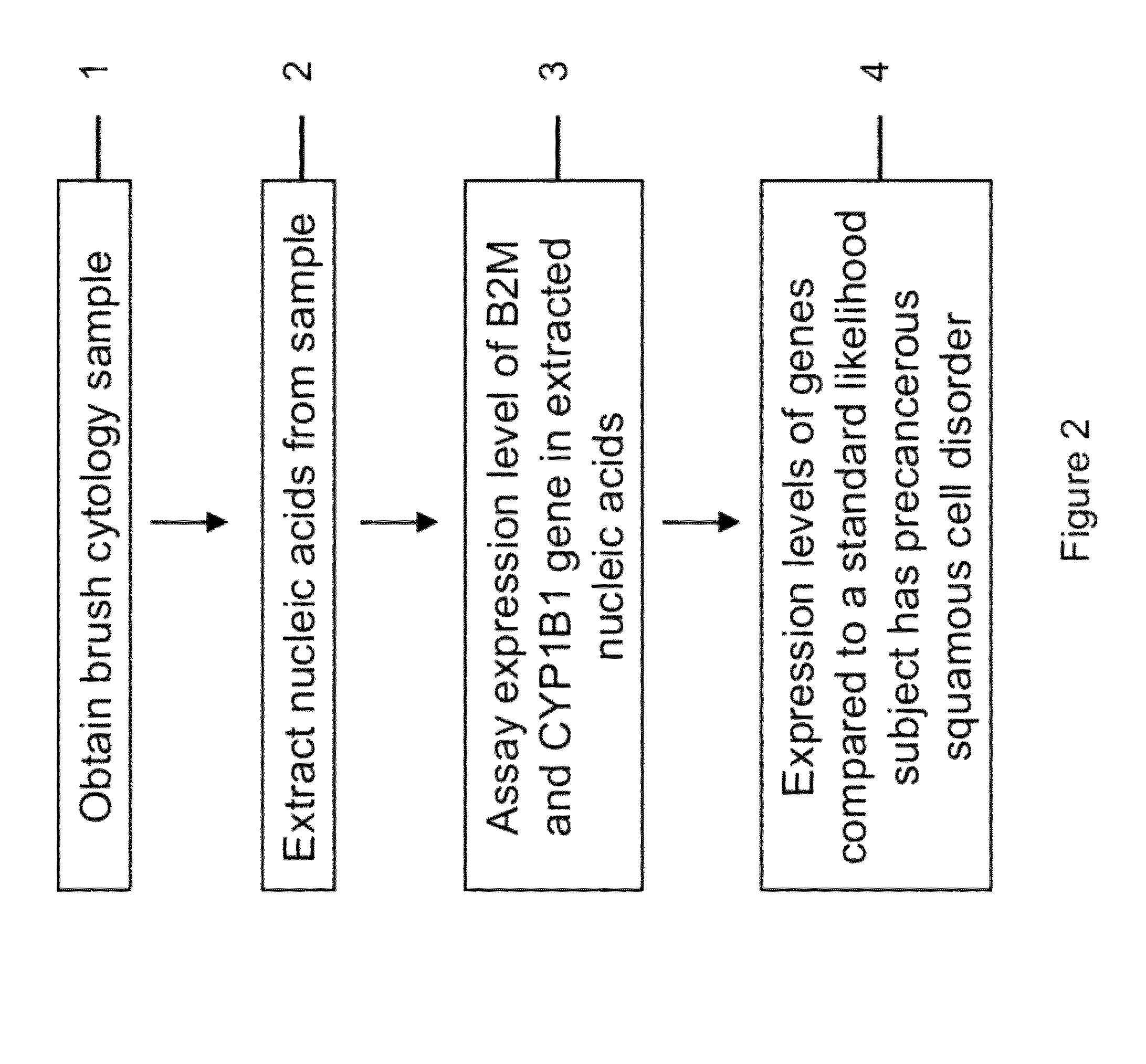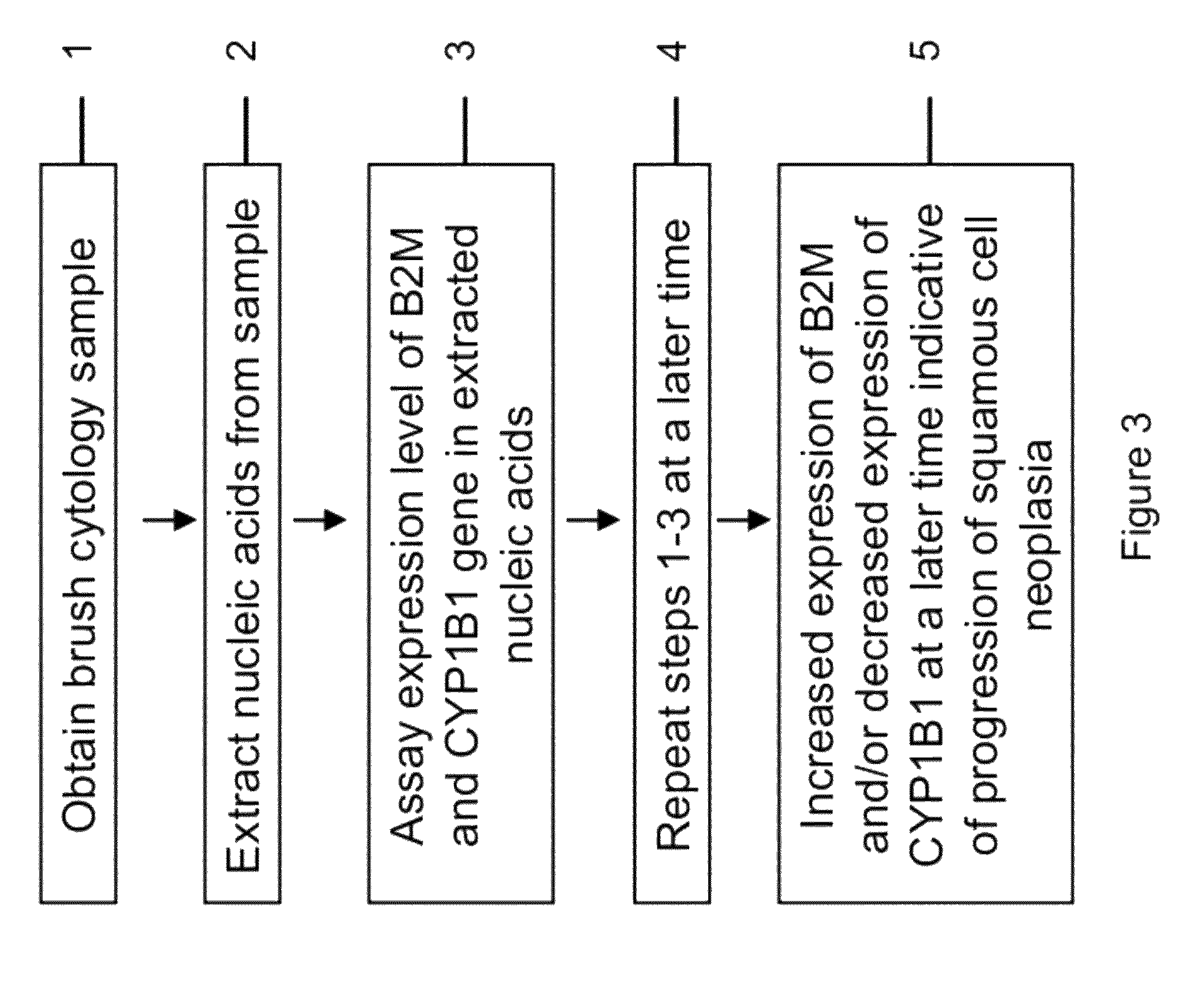RNA from cytology samples to diagnose disease
a cytology and cytology technology, applied in the field of rna from cytology samples to diagnose diseases, can solve the problems of inability to obtain high-quality rna from oral tissue without using biopsies, potential problems, and validation of quantitative analysis of rna expression
- Summary
- Abstract
- Description
- Claims
- Application Information
AI Technical Summary
Benefits of technology
Problems solved by technology
Method used
Image
Examples
example 1
Materials and Methods
Oral Carcinogenesis
[0132]Dibenzo[a,I]pyrene was applied orally at a level of 0.025 nm three times a week for 33 weeks to produce floor of the mouth and lateral border of tongue tumors in Golden Syrian Hamster (Mesocricetus auratus). Five of 12 animals developed oral squamous cell carcinoma (OSCC) detectable by gross inspection. These were later verified histologically. The average cross-sectional area of the lesions in these five was 3.2 mm2. The first samples were taken from these five hamsters 1 month after the end of the carcinogen exposure (week 37). This was to insure that the observed gene expression changes were due to longterm changes in the tissue and not directly due to the presence of 0.0025 nM dibenz[a,I]pyrene. Eight hamsters treated identically but never exposed to dibenzo[a,I]pyrene were used as the source of control tissue. All procedures were carried out within the guidelines of the Animal Research Committee at the University of Illinois at Chic...
example 2
Experimental Results
Reliability of Quantitation of Brush Cytology Sample RNA
[0142]One month after the end of the dibenzo[a,I]pyrene exposure, brush cytology samples were harvested on three consecutive weeks from diseased and control unexposed hamsters (FIGS. 6A and 6B). RNA was purified and subjected to real-time q-PCR analysis (FIGS. 7A-7F). We used these two sources of cells (tumor epithelium and control mucosa) to increase the probability that specific RNA expression levels would vary among the different animals. The bar graphs in FIGS. 7A-7F show the measured level for each RNA of interest and allows an analysis of the reliability of the methodology described here. In addition to the tumor-associated genes, expression of the endothelial cell marker PECAM1 was also measured. The ICC was calculated as a measure of the degree of similarity between measurements carried out at different times for the same animal. It is compared to the degree of similarity of measurements for the diff...
PUM
| Property | Measurement | Unit |
|---|---|---|
| pH | aaaaa | aaaaa |
| area | aaaaa | aaaaa |
| real time polymerase chain reaction | aaaaa | aaaaa |
Abstract
Description
Claims
Application Information
 Login to View More
Login to View More - R&D
- Intellectual Property
- Life Sciences
- Materials
- Tech Scout
- Unparalleled Data Quality
- Higher Quality Content
- 60% Fewer Hallucinations
Browse by: Latest US Patents, China's latest patents, Technical Efficacy Thesaurus, Application Domain, Technology Topic, Popular Technical Reports.
© 2025 PatSnap. All rights reserved.Legal|Privacy policy|Modern Slavery Act Transparency Statement|Sitemap|About US| Contact US: help@patsnap.com



